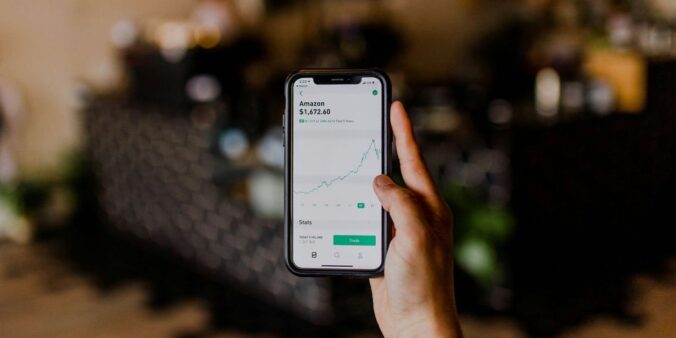Let’s explore how Robinhood makes money, its financial performance, challenges, and the path to profitability, shedding light on this fintech giant’s inner workings. Read on!
Key Takeaways
- Robinhood’s commission-free trading model attracts a significant user base, especially young and tech-savvy investors.
- The company generates revenue through Payment for Order Flow (PFOF), where it receives compensation for directing trade orders to different parties.
- Robinhood also earns money by collecting interest on uninvested cash balances in user accounts.
- Additional revenue streams include subscription services like Robinhood Gold and rebates from trading venues.
- The company faces regulatory and legal challenges, which could impact its future profitability and operations.
The Robinhood Business Model

Robinhood Markets, Inc. is a financial services company that operates as a discount online broker. It offers a wide range of investment products and services, including stocks, ETFs, cryptocurrency, options, and commission-free trading. Robinhood revolutionized the brokerage industry by offering commission-free trades. This approach attracted a significant user base, particularly among young, tech-savvy investors. The app’s ease of use and zero trading fees were a major draw, but the big question remained: how does Robinhood generate revenue?
Payment for Order Flow (PFOF)
Payment for Order Flow (PFOF) is a cornerstone of Robinhood’s revenue model. When Robinhood users trade options, stocks, or ETFs, their orders are sent to trading venues and market makers. These entities execute the trades and, in return, pay Robinhood for routing these orders to them. This process is what we call Payment for Order Flow.
How PFOF Works
One of the primary ways Robinhood makes money is through a practice known as Payment for Order Flow (PFOF). This might sound complex, but it’s quite straightforward. Essentially, when you place a trade on Robinhood, the app doesn’t execute the trade directly. Instead, it sends your order to a market maker – a firm that stands ready to buy and sell securities. These market makers pay Robinhood for the right to execute your trades.
Advantages and Disadvantages of PFOF
Advantages:
- Commission-Free Trading: PFOF allows Robinhood to offer commission-free trading to its users, making investing more accessible.
- Revenue Generation: It provides a significant revenue stream for Robinhood, enabling the company to sustain its operations and innovate.
Disadvantages:
- Potential Conflicts of Interest: There is a concern that brokers might route orders to market makers that pay the highest fees rather than those that provide the best execution quality.
- Lack of Transparency: Critics argue that PFOF can lead to a lack of transparency in how trades are executed and the true cost to the investor.
Regulatory Scrutiny
Payment for Order Flow has been a subject of debate and criticism. Regulatory bodies have scrutinized this practice to ensure that it does not harm retail investors. The regulatory environment continues to evolve, with ongoing discussions about the need for more transparency and potential reforms to protect investors.
Interest on Cash Balances
Earning Interest on Uninvested Cash
Another significant revenue stream for Robinhood is the interest earned on uninvested cash in users’ accounts. When you deposit money into your Robinhood account, any cash that isn’t immediately used to buy stocks or other securities can earn interest for Robinhood. This is similar to how banks operate, using customer deposits to generate interest income.
Impact on Users
If customers have uninvested cash that isn’t swept into their Cash Management network of banks, Robinhood Securities may earn income, primarily from depositing the cash into interest-bearing bank accounts. This revenue stream is relatively small and gets grouped with “other revenue,” accounting for less than 10% of the total income.
Robinhood isn’t responsible for the interest payments offered to Cash Management cardholders. Instead, the company moves cardholders’ funds into a network of FDIC-insured partner banks, which pay the interest on those deposits.
Comparison with Traditional Brokers
In addition to the revenue generated from premium features, Robinhood also earns interest on the cash balances held by its users. This means that when users have funds sitting in their Robinhood accounts, the company can invest those funds and earn interest on them. This not only helps Robinhood generate revenue but also allows users to potentially earn some interest on their idle cash.
Robinhood Gold: Subscription Services

Robinhood Gold is a premium subscription service offered by Robinhood for a monthly fee of $5. This service provides users with access to a range of additional tools and benefits designed to enhance their trading experience. Robinhood Gold subscriptions offer features such as margin trading, professional market data, and larger instant deposits.
Features of Robinhood Gold
Robinhood Gold includes several enhanced trading features:
- Margin Trading: Borrowing money to buy stocks, which can amplify both gains and losses.
- Market Data: Access to professional research and more in-depth market data, including NASDAQ Level II Market Data and Morningstar research reports.
- Bigger Instant Deposits: Larger instant deposit amounts compared to the standard account.
Cost and Benefits
For a monthly fee of $5, users gain access to the premium features of Robinhood Gold. While the subscription fees are less than 10% of the company’s total revenue, they provide an alternative income stream for the platform. The benefits include:
- Enhanced market data and research reports.
- Ability to invest on margin at discounted rates.
- Larger instant deposits, allowing for quicker trading opportunities.
User Adoption
Robinhood Gold has seen a steady adoption rate among users who are looking for more advanced trading tools and features. The subscription service appeals particularly to those who want to leverage margin trading and access professional market data to make more informed investment decisions.
Robinhood Gold subscriptions offer a suite of powerful investing tools, giving users the ability to enhance their investment strategies through additional features and benefits.
Rebates from Trading Venues

Robinhood also earns rebates from trading venues. These are incentives paid to brokers for sending trades to specific exchanges. While not as significant as PFOF, these rebates add up and contribute to the company’s overall revenue.
Mechanism of Rebates
When customers buy or sell stocks, ETFs, and options through their individual investing accounts, their orders are sent to one or more market makers or exchanges for execution. To compete with exchanges, market makers offer rebates to brokerages and typically offer better prices than exchanges.
Financial Impact
Robinhood earns a portion of its revenue through rebates from market makers and trading venues. For example, as of May 14, 2024, for every $100 of notional value for executed crypto orders, Robinhood received $0.45 in rebates from its trading venues. These rebates, although small per transaction, accumulate over millions of trades, contributing significantly to the company’s revenue.
Industry Comparisons
Compared to traditional brokers, Robinhood’s model of earning money through rebates is more transparent and user-friendly. Traditional brokers may have hidden fees and less favorable rebate structures. Robinhood’s approach ensures that users benefit from competitive prices while the company still earns money through these rebates.
Securities Lending
Securities lending is a process where Robinhood lends out stocks owned by its users to other financial institutions or traders who wish to short sell them. In return, Robinhood earns interest from these loans. This practice is a lesser-known revenue stream for the company but contributes significantly to its income.
Robinhood generates net interest revenue (interest revenue minus interest expenses) on securities lending transactions. This dual approach to lending and borrowing contributes approximately 17.5% of Robinhood’s total income. The interest earned from these loans is a crucial part of Robinhood’s financial model.
While securities lending can be profitable, it comes with its own set of risks. These include counterparty risk, where the borrower may default, and market risk, where the value of the lent securities may fluctuate. Robinhood must manage these risks carefully to maintain its revenue stream from securities lending.
Understanding the intricacies of securities lending can enhance one’s financial literacy and provide deeper insights into how modern brokerage firms operate.
Regulatory and Legal Challenges

Robinhood has faced several legal challenges over the years, including fines and lawsuits. One notable case involved a $65 million settlement with the SEC over allegations of misleading customers about revenue sources and failing to ensure the best execution of trades. These legal issues have highlighted the importance of transparency and compliance in Robinhood’s operations.
With its rapid expansion and increasing influence, Robinhood has caught the attention of regulatory bodies. Entities like the Securities and Exchange Commission (SEC) and the Financial Industry Regulatory Authority (FINRA) have launched investigations and scrutiny into the company’s practices. These regulatory bodies play a vital role in protecting investors’ interests, ensuring transparency, and maintaining market integrity.
While regulatory scrutiny can pose challenges for Robinhood, it also presents an opportunity for the company to demonstrate its commitment to compliance and investor protection. By working closely with regulatory bodies, Robinhood can strengthen its position as a trusted platform and build confidence among its user base.
Furthermore, the involvement of regulatory bodies can lead to industry-wide improvements. As Robinhood navigates the regulatory landscape, it can help shape the future of online trading by collaborating with regulators to establish best practices and standards. This collaboration can result in a more transparent, efficient, and investor-friendly trading environment.
Navigating the regulatory and legal landscape can be daunting for any investor. Staying informed about the latest changes and understanding their implications is crucial for safeguarding your investments. For expert advice and up-to-date information, visit our website.
Conclusion
In conclusion, Robinhood’s innovative business model has revolutionized the brokerage industry by offering commission-free trades and attracting a significant user base. Despite the allure of zero trading fees, the platform employs a multifaceted revenue model to sustain its operations and drive profitability. Key revenue streams such as Payment for Order Flow (PFOF), interest on cash balances, subscription services like Robinhood Gold, and rebates from trading venues collectively contribute to its financial health. However, understanding these mechanisms is crucial for users to make informed decisions about their financial activities. As Robinhood continues to navigate challenges and controversies, its ability to adapt and evolve will determine its long-term success in the fintech landscape.
Frequently Asked Questions
How does Robinhood offer commission-free trading?
Robinhood offers commission-free trading by generating revenue through other methods such as Payment for Order Flow (PFOF), interest on cash balances, subscription services like Robinhood Gold, rebates from trading venues, and securities lending.
What is Payment for Order Flow (PFOF)?
Payment for Order Flow (PFOF) is a practice where Robinhood receives payments from market makers in exchange for directing users’ trade orders to them. This is a significant revenue stream for Robinhood.
How does Robinhood earn interest on cash balances?
Robinhood earns interest on the uninvested cash in users’ accounts. This interest is generated by lending out the cash or investing it in interest-bearing accounts.
What is Robinhood Gold and what are its benefits?
Robinhood Gold is a subscription service that offers enhanced trading features such as larger instant deposits, professional research, and margin trading. Users pay a monthly fee to access these benefits.
Are there any risks associated with securities lending?
Yes, securities lending involves risks such as the borrower defaulting on the loan or the value of the lent securities fluctuating. Robinhood manages these risks through collateral and other risk management practices.
Is Robinhood subject to regulatory scrutiny?
Yes, Robinhood is subject to regulatory scrutiny from various financial authorities. The company has faced legal challenges and continues to navigate a complex regulatory environment.



Leave a Reply